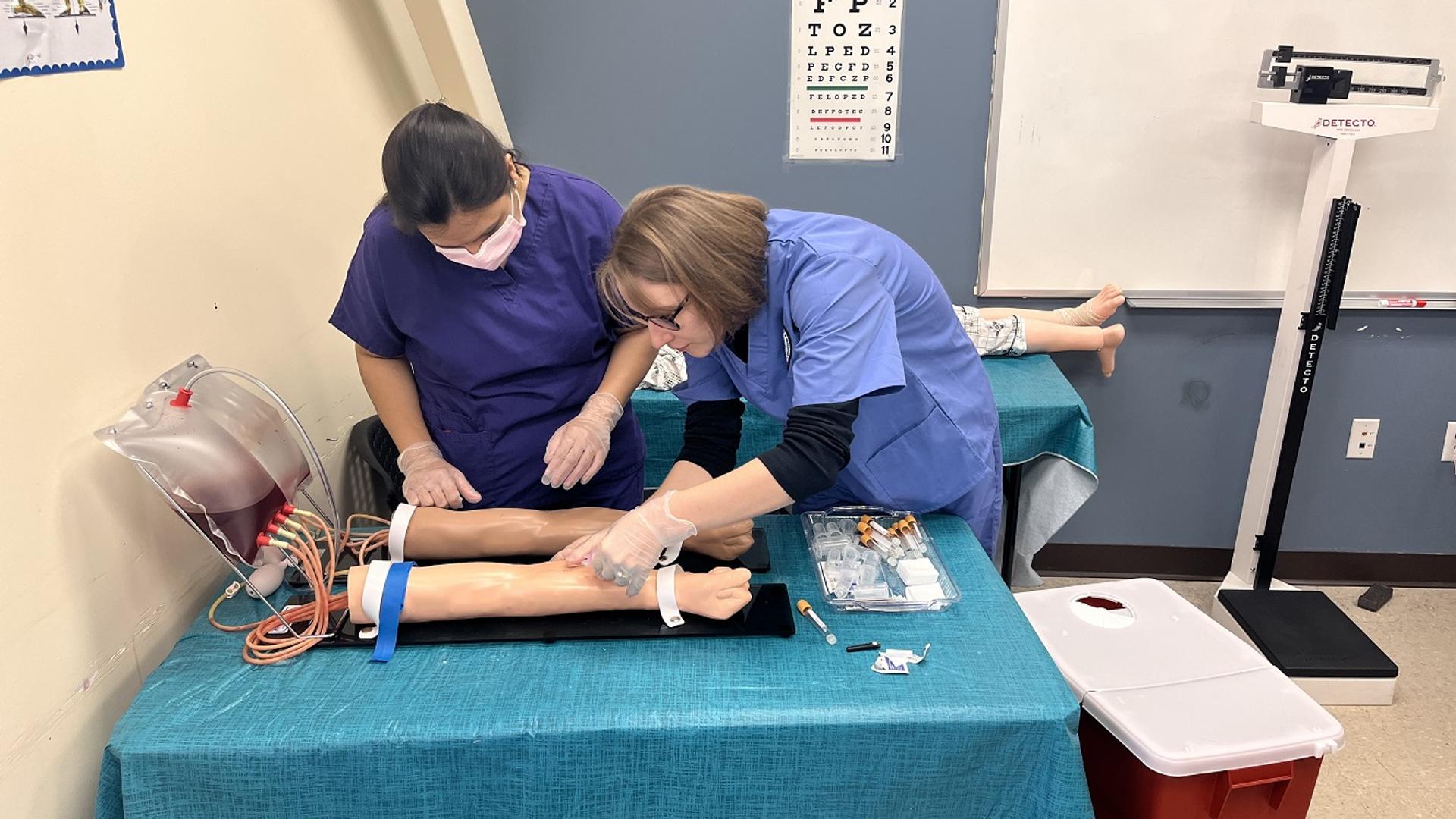The Basic Principles Of Northeast Medical Institute - New Haven Campus Phlebotomy Course & Cna Class
The Basic Principles Of Northeast Medical Institute - New Haven Campus Phlebotomy Course & Cna Class
Blog Article
Examine This Report on Northeast Medical Institute - New Haven Campus Phlebotomy Course & Cna Class
Table of Contents3 Simple Techniques For Northeast Medical Institute - New Haven Campus Phlebotomy Course & Cna ClassThe Facts About Northeast Medical Institute - New Haven Campus Phlebotomy Course & Cna Class UncoveredGet This Report on Northeast Medical Institute - New Haven Campus Phlebotomy Course & Cna ClassWhat Does Northeast Medical Institute - New Haven Campus Phlebotomy Course & Cna Class Mean?Some Known Factual Statements About Northeast Medical Institute - New Haven Campus Phlebotomy Course & Cna Class The smart Trick of Northeast Medical Institute - New Haven Campus Phlebotomy Course & Cna Class That Nobody is Discussing
The usage of such gadgets must be come with by various other infection prevention and control methods, and training in their use.For setups with low sources, price is a driving consider purchase of safety-engineered gadgets - Phlebotomy Training. Where safety-engineered devices are not readily available, skilled use a needle and syringe serves. Unintended exposure and details information regarding a case need to be taped in a register. Support services must be promoted for those that go through unintentional direct exposure.
In the blood-sampling area for an outpatient department or clinic, provide a comfortable reclining sofa with an arm rest.
Northeast Medical Institute - New Haven Campus Phlebotomy Course & Cna Class Things To Know Before You Get This
Ensure that the indicators for blood sampling are plainly defined, either in a created procedure or in documented directions (e.g. in a research laboratory form). Gather all the devices required for the procedure and location it within secure and very easy reach on a tray or cart, ensuring that all the products are plainly visible.
Present on your own to the individual, and ask the person to mention their full name. Examine that the laboratory type matches the individual's identification (i.e. match the person's information with the laboratory form, to make sure precise recognition).
Make the client comfortable in a supine position (if feasible). The person has a right to decline a test at any type of time before the blood sampling, so it is essential to make sure that the person has actually comprehended the treatment - CNA Courses.
Unknown Facts About Northeast Medical Institute - New Haven Campus Phlebotomy Course & Cna Class
Extend the individual's arm and inspect the antecubital fossa or forearm. Find a blood vessel of a good dimension that shows up, straight and clear. The layout in Section 2.3, reveals common positions of the vessels, however many variants are feasible. The typical cubital vein lies in between muscular tissues and is usually one of the most simple to penetrate.
DO NOT put the needle where veins are diverting, due to the fact that this boosts the possibility of a haematoma. The capillary should be visible without applying the tourniquet. Finding the vein will certainly help in establishing the proper size of needle. Apply the tourniquet regarding 45 finger sizes above the venepuncture website and re-examine the capillary.
Haemolysis, contamination and presence of intravenous liquid and medicine can all change the outcomes (39. Nursing staff and physicians may access central venous lines for specimens following methods. Nonetheless, samplings from central lines bring a danger of contamination or incorrect lab test results (https://telegra.ph/Northeast-Medical-Institute-New-Haven-Campus-Phlebotomy-Course--CNA-Class-06-29). It is acceptable, yet not perfect, to injure specimens when very first presenting an in-dwelling venous gadget, before connecting the cannula to the intravenous fluids.
About Northeast Medical Institute - New Haven Campus Phlebotomy Course & Cna Class
Allow the location to dry. Failing to permit adequate contact time raises the threat of contamination. DO NOT touch the cleansed website; specifically, DO NOT place a finger over the vein to assist the shaft of the subjected needle. It the website is touched, repeat the sanitation. Execute venepuncture as adheres to.
Ask the patient to form a hand so the veins are a lot more popular. Enter the capillary swiftly at a 30 degree angle or much less, and continue to present the needle along the capillary at the easiest angle of entry - CNA Courses. Once sufficient blood has actually been collected, launch try this out the tourniquet BEFORE taking out the needle
The Greatest Guide To Northeast Medical Institute - New Haven Campus Phlebotomy Course & Cna Class
Withdraw the needle delicately and apply mild stress to the site with a tidy gauze or completely dry cotton-wool ball. Ask the patient to hold the gauze or cotton wool in position, with the arm expanded and raised. Ask the person NOT to bend the arm, due to the fact that doing so creates a haematoma.

Northeast Medical Institute - New Haven Campus Phlebotomy Course & Cna Class Can Be Fun For Everyone
Do not push the syringe plunger since added pressure enhances the danger of haemolysis. Where feasible, keep the tubes in a rack and move the rack in the direction of you. Inject downwards right into the ideal coloured stopper. DO NOT eliminate the stopper due to the fact that it will launch the vacuum cleaner. If the sample tube does not have a rubber stopper, infuse exceptionally gradually right into television as reducing the stress and velocity utilized to move the specimen lowers the threat of haemolysis.
:max_bytes(150000):strip_icc()/Primary_Image-b2e24c37575f48279cff673865d3853c.jpg)
Report this page